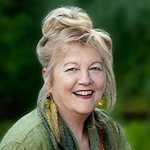What makes Marin Theatre Company stand out?
Marin Theater Company stands out because of our focus on new writers, new playwrights, new works. There are not that many companies that focus on new work and new writers. Some companies include new works, but that is not their focus. For us, it is our entire season. Often, the work we do is either a world premiere, a national premier, or a Bay Area premiere.
How does Marin Theatre Company (MTC) go about choosing performances to bring to our community?
MTC typically takes the review process from about August through January of the next year. Staff, community members, and artists are involved. We review scripts, some under consideration from the prior year, taking anywhere from 18 – 24 months. Scripts are collected. Ideas are formulated. Scripts most talked about or that fit with what is going on in the world then make their way to the August selection committee.
We look for new plays, new American plays, and playwrights with unique voices, writing about big global and international and national issues. We also look for playwrights taking risks somewhere within their craft, whether it is the way they are writing or the structure of the piece, or the style of performance.
For instance, one of the pieces we are doing this year but was supposed to be last year is the third piece in our Pemberley Series [imaginings from Jane Austen’s popular novel, Pride and Prejudice]. We have been working on the trilogy of these three plays for about 6 ½ years.
Another example is a play we produced in 2014, called The Whale, by Samuel Hunter. We gave that play our Sky Cooper New American Play Prize, four years before we produced it. We were waiting for our body of work to get to the point where we felt our audience would be ready to handle Sam’s play. That is not unusual for us. A lot of the writers that we find are way ahead of where we have brought our audience. That means we have a lot of groundwork to do to get them ready for the type of play we want to do for them. That is a big part of how our seasons have evolved. We look for one piece that builds to the next piece that builds to the next. That is how we find new writers and have our audience ready to embrace them.
How do the new writers find MTC?
For 13 years, we have had the two new American play prizes, funded for us by Norton Cooper. We were getting anywhere from 400 to over 1,000 new plays each year. We were reading them in their entirety, which is why we were able to find so many new important plays and new writers.
It does not sound as though MTC will have what can be called a “typical season.” Will it?
We do not try to put a season together around a single idea or theme, partly because finding the best new plays makes it hard to stick to one topic or a theme that runs through things.
Recent MTC messages to supporters included links to NY Times articles on how the pandemic has changed live theater, perhaps bringing on a rebirth. The highlights suggest that real diversity from the ground up is essential, with a long view of the classics that includes the amazing range of works by people of color. Another is to embrace streaming to widen the theater’s reach. Does any or all of this feel relevant to Marin Theatre Company?
Yes, it all does.
Okay – to narrow it down, how does MTC promote new writers and people of color?
For ten years, our work has been representative of 50% Black, Indigenous, and People of Color. It is not new for us. In the past five years, 60% of our work has been underrepresented voices because we have been committed to producing the six best new American plays that we can. We look for diverse voices pushing boundaries to find voices showing us different walks of life that we may not see every day. These things are baked into what we are looking for to find those voices that expand our view of the world and show us how we can be better citizens and be better people. We are pushing to try and open up to wider audiences.
One of the barriers to access that people face in the Bay Area is transportation. That includes public transportation, bridges, tolls, and local access once you get to another community. That all plays a role in how accessible MTC can be. The changes we are experiencing now, especially through digital platforms, open up access, because the piece can be digitally accessed. This is the direction things are going, and it is allowing for greater participation and something I think most want to see continue.
Does MTC feel that RedAlert Restart had any effect on its supporters? Did it move the Senate towards a relief package to benefit those who work in the arts? Did it open up any conversations or funding avenues?
I hope so – we all put energy into it. We sent photos out, and there was a flyover that showed images throughout the Bay Area. We want people to know how difficult this is for the arts as a whole and individual artists in particular. We went from a full-time staff of 24 to a full-time staff of 7, and we are still trying to figure out how to put a season together. We are also down below 60% of what our annual budget is for a year.
It has opened up conversations. People have stood up to support new things, and others have stepped up and asked how they can help tide us over until we can produce again. It has been pretty phenomenal, and we are still working through this.
MTC, like many theaters in the Bay Area, was forced to cancel several performances. Does MTC have any plans to create streamed performances for the Fall/Winter season?
We are planning a season with multiple digital projects that people can view from their own homes’ safety. We will also have a cushion period where we may go digital; we may go outdoors, go indoors if conditions permit, use the best science and the best analysis that people are giving us, to know when we are pretty sure we can be back in our spaces. It is all conditional on the safety of people because we are following all the protocols. The first three things will probably be digital and may evolve from there.
What skills are needed to pull off a hybrid season in a way that makes the MTC audience feel connected via film or on Zoom?
We are learning as we go. We are working on three different projects that will give the audience three very different experiences of performance. The team creating the first did it on stage a year ago, and now they figured out how to turn it into a digital experience. Interestingly, the digital experience has actually increased the intensity of what the piece is, and really serves the piece.
The second piece we will be doing has been written as a hybrid and will be performed live on our stage, and we will capture multiple performances on our stage and then put the best of that together so that it will feel like a live performance.
The third piece will be a combination of platforms. There will be a live actor working from our space during the performance, fused with the audience helping to dictate the story’s direction with some pieces prerecorded. Filmed pieces will interact with and then come back in a space digitally, virtually to our live, onstage actor. We are trying to evolve, be creative, and do different things.
You’ll be celebrating your 15th anniversary as artistic director of MTC in 2021. How does that feel?
Shocking. I started my career in Cincinnati, Ohio, and then was in Atlanta, so I was very East Coast. I did not really expect to be here that long, but I fell in love with the West Coast and the Bay Area in particular. Marin has become a real home. I was married when we came here, and now we have two kids, a 9-year-old and a 7-year-old, who are both in school, and they’ve grown up as West Coast kids. The theater has changed so much, too. When I came here, the MTC had a $1.7 million annual budget, and before the pandemic, we were in the middle of a $4.3 million season. So, it has been a wild ride. The theater and the community have really embraced the work we have done and has allowed us to continue to focus on new American playwrights, which we are really lucky to do because not a lot of theaters in suburban markets like ours can do that. I feel very lucky. I really love this place.
See what MTC is doing now and upcoming:
“Natural Shocks” by Lauren Gunderson, streaming on Soundcloud
Productions planned, now through 2021
About Jasson Minadakis

Marin Theatre Company’s Artistic Director, Jasson Minadakis, is originally from the East Coast. He grew up and went to school in Virginia and graduated from James Madison University. Minadakis moved to Cincinnati, founded the Cincinnati Shakespeare Festival, and then became artistic director of Atlanta’s Actor’s Express. When he became artistic director at MTC, he and his wife moved to Marin in 2006.

Kate Fitzsimmons is a freelance writer and fund development professional. Her writing skills were honed as a Contributing Editor to The San Francisco Review of Books where she interviewed John Updike, Joyce Carol Oates, Bobbie Ann Mason, Alice Walker and others. She works with businesses, nonprofits and entrepreneurs to assist them in raising their visibility through their stories. When she isn’t writing, she is cooking for friends, collecting art or engaged in a good novel.